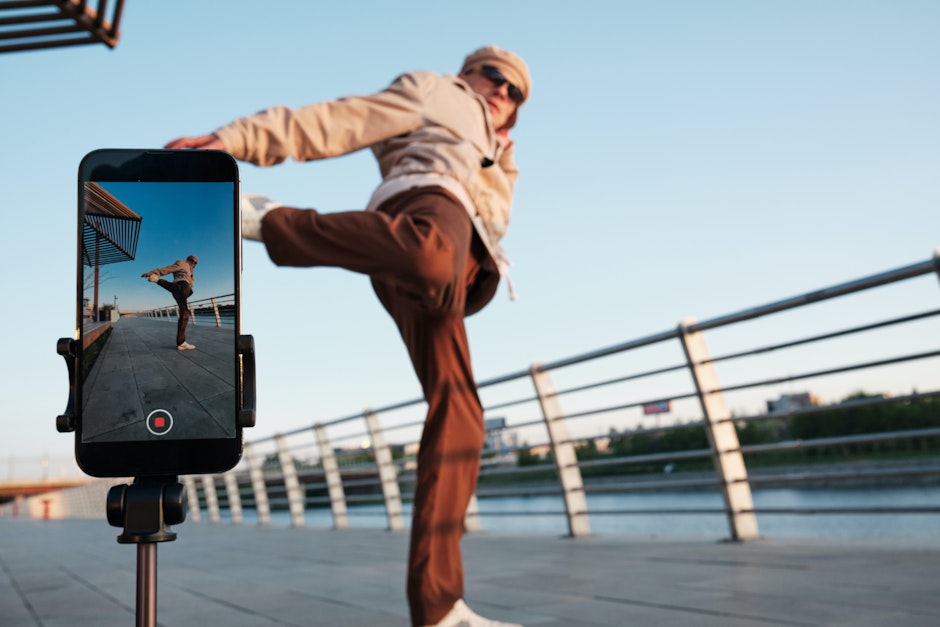Sonic branding: The wrong music choice can get your brand sued – here’s how to get it right
Social media may seem like a public sphere

Yes, using music in social media is a form of music distribution. That point has been made all too clear recently, with Sony Music bringing a major lawsuit against a US makeup company for (allegedly) using licensed music across Instagram and TikTok without permission or proper licensing.
The suit names “at least 329” videos across these platforms that use “hundreds” of recordings by such Sony artists as Mariah Carey, Britney Spears and others. This includes ads that the company, OFRA Cosmetics, created and posted itself, and those created by influencer partners.
This is not an isolated incident. In 2021, Sony sued fitness apparel brand Gymshark for much the same reason, which was settled out of court. In 2022, Universal Music Group won a partial judgment against energy drink company Bang Energy for using its music without permission in some 140 promoted TikTok videos.
Cases like these are unfortunate because music has such a clear benefit as not only an overarching branding strategy, but as a specific social media engagement tactic as well. So while we may applaud the intent behind using music in social media advertising, influencer campaigns, and branding efforts, this case illustrates the need for brands to use fully-cleared music on social media.
None of this should come as a surprise. Record labels have sued entire social media platforms for infringing on music rights, such as a $250m lawsuit against the service formally known as Twitter by the three major labels.
Each platform has different rules. For example, YouTube treats personal and branded content differently from TikTok and Instagram, while Instagram has different rules for different business types.
To help you navigate this maze of rules (and potential pitfalls), here’s a quick primer on the main platforms, how they manage music posted, and your options for incorporating music in each.
YouTube
YouTube’s unique fingerprinting system Content ID scans every video uploaded to the platform and gives copyright owners the opportunity to track, block, or monetize the video. This includes advanced applications like recreated or imitated music as well.
But to be completely safe, the best option is to utilize a copyright-safe (aka royalty free) music library which YouTube’s Content ID system automatically clears.
Instagram also uses an automated ID system, but with fewer controls/options. It simply mutes any copyrighted music it detects and sends the publisher a note explaining why. It also complies with DMCA copyright infringement requests, otherwise known as “takedown notices.” If you are the target of multiple such notices, Instagram will limit your ability to post or access certain features. In some cases, your account could even be deleted.
Facebook (Instagram’s sister company) offers business accounts access to its Sound Collection, which contains about 9,000 licensed songs and sounds. Otherwise, businesses can use music licensing services like Songtradr, which provide more flexibility to select music – and a much larger catalog of music to choose from.
For larger campaigns that want to use known music, a commercial music license is recommended.
TikTok
As a relative newcomer to the group, TikTok’s systems are not as far along as YouTube and Instagram. Rightsholders are limited to submitting takedown notices under the DMCA, which an IP specialist reviews and executes if cause is found. The company also issues a “three strikes” warning rule before banning any account found to regularly use infringing content.
But TikTok does have several music access options. Its Audio Library features music cleared for commercial use, and it also works with official sound partners like Songtradr and Big Sync Music who facilitate clearing the rights for brands who want to use music on the platform.
Like Instagram, TikTok has music available in-app for non-commercial music use. But as Sony’s lawsuit illustrates, any personal influencer receiving payment to make content promoting a brand is not authorized to use it.
As the current Sony lawsuit and the previous suit against Bang Energy show, working with influencers can be a slippery slope when it comes to music. The instant a financial transaction takes place – a music license is required, with specific terms stating how, when, and where you can use music.
So it’s important to have music use expectations lined up in advance when working with social creators. Here’s a quick rundown of the critical terms to consider when discussing music licensing agreements to ensure your partnership runs smoothly.
- Media type: This stipulates where you – and your partners– can use the music. Be sure to name every platform where your video will be available to watch.
- Territorial restrictions: Music rights vary worldwide. Rights cleared in one region don’t necessarily transfer to others. If your partners cannot block access to viewers in specific territories (called geo-blocking), then your terms need to include global music clearance.
- License duration: Be prepared to remove any content once the term of the music license expires, or to negotiate to extend the license. For peace of mind, consider having a centralized location where all of your music licenses can be found.
Don’t let any of this scare you off from incorporating music into your social strategy. It’s a powerful component of any brand campaign. Just be sure you clear any music rights first and have a solid solution in place for future tracking.
Songtradr has worked with thousands of brands globally to discover the right music and license to meet their unique needs. For some, a customized, brand-aligned pre-cleared music catalog is the answer. For others, remixing a classic song or finding a suitable instrumental for social-first campaigns is preferred.
The point is, when it comes to using music in social campaigns, you have plenty of options. It’s not as complicated as it may look at first. Working within the rules, either on your own or with a partner, is certainly better than the alternative.

